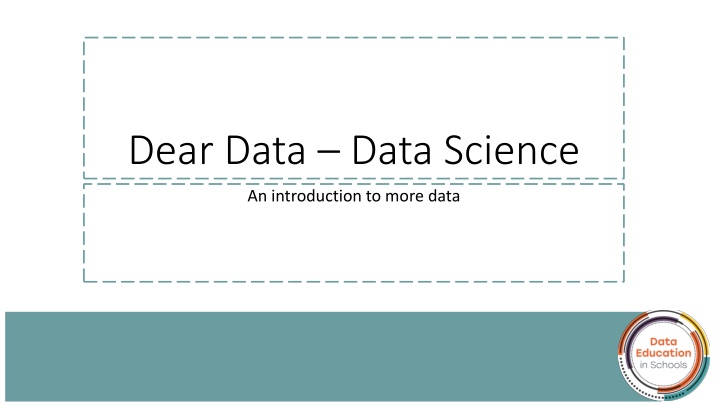
Unlocking Data Insights: A Journey into Data Science and Visualization
Dive into the world of data science with a focus on asking insightful questions, gathering meaningful data, and presenting findings through visualizations. Learn how to add depth to your data collection to uncover valuable information and tell compelling stories with your data.
Download Presentation

Please find below an Image/Link to download the presentation.
The content on the website is provided AS IS for your information and personal use only. It may not be sold, licensed, or shared on other websites without obtaining consent from the author. If you encounter any issues during the download, it is possible that the publisher has removed the file from their server.
You are allowed to download the files provided on this website for personal or commercial use, subject to the condition that they are used lawfully. All files are the property of their respective owners.
The content on the website is provided AS IS for your information and personal use only. It may not be sold, licensed, or shared on other websites without obtaining consent from the author.
E N D
Presentation Transcript
Dear Data Data Science An introduction to more data
Learning intentions [unit] How to ask questions to allow more depth to data collected How to uncover the story within the collected data Using a visualisation to present the data so that others can discover information
Success criteria [unit] Have created a data self portrait using: Adding depth questions to a data gathering task Collecting data to match these questions Interpreted the collected data to find the new information Created a visulisation to allow fellow students and teachers to discover the information within your data
Learning intention [lesson] What is Data Science What is data science used for in the real world Why do we look for more depth in our data How do we get more depth to our data collection
Data science The collection, interrogation, and presentation of data in such a way that new information can be found within the data.
Data science in the world Used to help make predictions based on prior data, for example: Election Results Trading of stocks and shares Used to help analyse performance to allow future improvement, for example Sports performance Improve the courses you study in school
Data depth Questions By just collecting data to answer one question we limit the information that can be discovered. For example collecting how many drinks of water in a week. With a simple question of how many drinks of water? , the data collected would look something like this:
Adding to data depth with questions By using some key data gathering questions: Who, What, Why, When, Where, How The quantity of data can be increased and allow us to try and find connections
Water Example more detail With a slightly more complex how many drinks of water and what were the drunk from:
Water Example EVEN more detail We can keep adding questions to collect a lot of data to try and see patterns in the data that we might not have noticed: How many drinks, what was it drunk from, what size was the drink, what time of the day was the drink
Task 1 Creating Questions Work in groups and write down the extra depth questions your could ask about drinks for the week.
Task 1: Example Answers What was drunk? What was it drunk from? What time was it drunk? What day was it drunk on? Why was it drunk? Where was it drunk? How was it drunk? How long did it take to drink? What was worn while it was drunk? What was happening when it was drunk?
Task 2: Questions about media Think about using media during the week. Work in groups to write down all the questions you could ask to understand someone s media usage in a week. What is the main question? What are the extra depth questions?
Task 2: Example Answers Where was it consumed What were you doing Why were you consuming it? How was the media consumed (listening, watching, reading, etc) What was it consumed form (Tv, book, computer, phone etc) What day was it? What time was it? How long did it take
Task 3 Questions about books Think about books. Work in groups to write down all the questions you could ask to understand more about a book. What is the main question? What are the extra depth questions?
Task 3: Example Answers Genre of book? Size of book? Type of book (fiction, non-fiction)? Length of book? Read the book? Author male or female? Construction of book (hard or soft back?) Topic
Collecting the data These sheets will help you collect your data with depth Lvl means Level. Each level will add more depth and detail (you do not need to fill every box with a question)
Collection Sheet: questions example Think about the questions you could ask about how someone uses their phone. The table shows example depth questions smartphone usage.
Collection Sheet: collected data example The table shows an example of some collected data about smartphone usage. The answer in Lvl1 corresponds to the question on the previous slide in the Lvl1 box.
Homework [for next week] 1. Choose one of the following categories: Media Consumed (Tv, film, books, comics, radio, music, etc) What did you drink this week Books in your home Clothes that you own Mobile apps that you used this week 2. Using what we have learned, decide on your depth questions and fill out the Your Questions table in the worksheet. 3. Collect data over the course of the next week [starting today]
If you require this document in an alternative format, such as large print or a coloured background, please contact dataschools@ed.ac.uk dataschools@ed.ac.uk






















